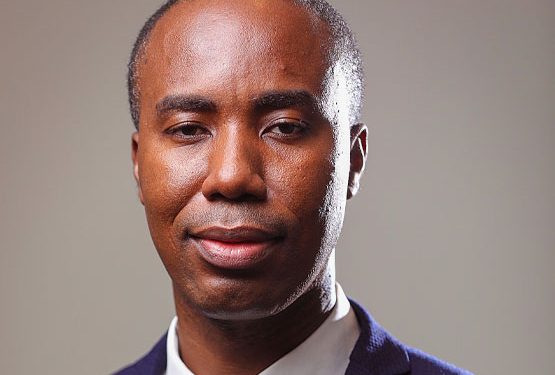
The corporate environment today is battling with a hidden canker, employee burnout which is fast emerging as a critical issue affecting productivity, morale, and overall business performance. Burnout is more than just stress.
It is a state of emotional, physical, and mental exhaustion caused by prolonged and excessive workplace pressures.
The World Health Organization (WHO) classifies burnout as an occupational phenomenon, characterized by feelings of energy depletion, increased mental distance from one’s job, and reduced professional efficacy.
While burnout has severe consequences for employees, its financial and operational impact on businesses is equally alarming. Companies that fail to address burnout risk losing talent, facing higher turnover costs, and suffering from diminished workplace performance.
This article seeks to shed more light on the harmful effects of Employee Burnout and how it can be curbed – a call to action essentially.
Employee burnout does not happen overnight. It is a gradual process that stems from chronic workplace stressors such as unmanageable workloads, lack of control over job responsibilities, insufficient rewards, and poor work-life balance.
Christina Maslach, a leading researcher on burnout, identifies three key dimensions of the condition: exhaustion, cynicism (or detachment from work), and a sense of ineffectiveness.
When employees experience these symptoms over an extended period, their engagement and productivity decline significantly.
A study by Gallup found that nearly 76% of employees experience burnout at some point in their careers, with 28% reporting frequent or constant burnout.
The industries most affected include healthcare, technology, finance, and education, sectors known for high-pressure environments and long working hours.
The COVID-19 pandemic exacerbated the problem, with remote work blurring the boundaries between professional and personal life, leading to increased stress and fatigue.
The Deadly Link Between Burnout and Sudden Cardiac Deaths in the Workplace
Employee burnout is increasingly recognized as a severe occupational hazard, not just for mental health but also for physical well-being.
One of the most alarming consequences of chronic workplace stress is its connection to cardiovascular diseases, including sudden cardiac deaths.
While burnout itself may not always be the sole cause, overwhelming evidence suggests that prolonged stress, exhaustion, and emotional strain significantly increase the risk of fatal heart-related incidents.
Research has long established that chronic stress triggers physiological changes that strain the cardiovascular system.
When employees experience sustained high-pressure work environments, their bodies remain in a prolonged “fight-or-flight” state, leading to elevated cortisol and adrenaline levels. Over time, this contributes to High blood pressure (hypertension), a major risk factor for
heart attacks and strokes. Also inflammation and arterial damage causing chronic stress that accelerates atherosclerosis (hardening of the arteries).
And then irregular heart rhythms (arrhythmias) causing severe stress that can trigger sudden cardiac arrest, even in seemingly healthy individuals.
A landmark study published in the European Journal of Preventive Cardiology (2017) found that employees suffering from burnout had a 20% higher risk of developing atrial fibrillation, a dangerous irregular heartbeat that can lead to strokes and heart failure. Another study in The Lancet (2021) linked high-stress jobs to a 48% increased risk of coronary heart disease.
Sudden cardiac death (SCD) occurs when the heart abruptly stops functioning, often due to an electrical malfunction (ventricular fibrillation). While pre-existing heart conditions play a role, extreme stress acts as a critical trigger.
- Japanese Karoshi Phenomenon – Japan recognizes “karoshi” (death from overwork), where employees, often in their 30s to 50s, die from heart attacks or strokes due to extreme job stress. A 2020 government report attributed nearly 2,000 deaths annually to work-related cardiovascular events.
- Harvard T.H. Chan School of Public Health Study (2022) – Employees working more than 55 hours per week had a 35% higher risk of stroke and 17% higher risk of fatal heart disease compared to those working 35-40 hours.
- American Heart Association Findings (2023) – Chronic job stress was associated with a 40% increased likelihood of SCD, particularly in high-pressure industries like healthcare, finance, and law enforcement.
Unlike a sudden injury or acute illness, burnout develops gradually, making it harder to detect before it becomes life-threatening. Many employees ignore early warning signs, persistent fatigue, insomnia, chest tightness etc, until a catastrophic event occurs.
Given the deadly consequences, companies must take proactive measures to enforce reasonable shift lengths (e.g., no 80-hour work-weeks) and mandate breaks and discourage the “always-on” culture.
Employees must have regular blood pressure and ECG checks for high-risk employees and stress management and cardiac wellness programs.
Organisations must foster and encourage open discussions about stress without stigma and provide access to mental health professionals.
The Financial Toll of Burnout on Businesses
The cost of employee burnout extends far beyond individual well-being, it has a measurable financial impact on organizations. Burnout leads to higher absenteeism, presenteeism (employees showing up but being unproductive) and turnover, all of which drain company resources.
Burnt-out employees are less efficient, make more errors, and struggle with decision-making. A study by Stanford University found that workplace stress contributes to $190 billion in healthcare costs annually in the U.S. alone, with burnout being a major factor. Employees suffering from burnout
are 63% more likely to take sick days and 2.6 times as likely to seek a new job, according to Gallup.
High turnover is one of the most direct consequences of burnout. Replacing an employee costs, on average, six to nine months of their salary in recruitment, training, and lost productivity during the transition period. For highly skilled roles, the cost can be even steeper.
A report by the Work Institute estimates that voluntary turnover costs U.S. businesses over $600 billion annually, with burnout being a leading cause.
A workplace culture that ignores burnout fosters disengagement and resentment. Employees who feel overworked and undervalued are less likely to advocate for their company, negatively impacting employer branding.
In an era where platforms like Glassdoor and LinkedIn allow employees to share their experiences publicly, a reputation for poor work-life balance can deter top talent from joining the organization.
While burnout can occur in any sector, certain industries are particularly vulnerable due to high demands and emotional labour. Healthcare workers, especially nurses and doctors, face extreme stress due to long shifts, life-or-death decisions, and emotional fatigue.
A study by the Mayo Clinic found that 44% of physicians experience symptoms of burnout, leading to higher medical errors and lower patient satisfaction.
The tech industry’s “always-on” culture, tight deadlines, and rapid innovation cycles contribute to burnout. A report by Blind revealed that 57% of tech workers feel burnt out, with many citing unrealistic expectations and poor work-life balance as key factors.
High-pressure environments, client demands, and long hours make finance, legal and consulting professions prone to burnout as well. A Harvard Business Review study found that investment bankers and consultants often work 80-100 hours per week, leading to severe mental health consequences.
Clearly, companies must put in more effort to deal with the instances of burnout in the workplace. Addressing burnout requires a proactive approach from leadership.
Companies must prioritize employee well-being through structural and cultural changes. Encouraging flexible work schedules, remote work options, and mandatory time-off policies can help employees recharge.
Companies like Microsoft have experimented with four-day workweeks, reporting a 40% boost in productivity and improved employee satisfaction.
Managers should foster an environment where employees feel safe discussing workload concerns without fear of retaliation. Regular check-ins and anonymous feedback surveys can help identify burnout risks early.
Offering access to counselling, mental health days, and stress management programs can also reduce burnout. Organizations like Google, Salesforce and even some mining Companies in Ghana, provide employee assistance programs (EAPs) and mindfulness training to support mental well-being.
Acknowledging hard work through bonuses, promotions, and verbal appreciation can combat feelings of inadequacy. Research by Deloitte shows that recognized employees are 63% more likely to stay at their jobs.
Employee burnout is not just an individual problem, it is a business crisis with far-reaching financial and operational consequences. Companies that ignore the signs of burnout risk losing top talent, incurring higher turnover costs, and damaging their reputation.
By fostering a supportive work environment, promoting work-life balance, and prioritizing mental health, organizations can mitigate burnout and cultivate a more engaged, productive workforce.
The cost of inaction is simply too high. Businesses must recognize that employee well-being is not a perk but a fundamental driver of sustainable success.
For Further Reading;
- World Health Organization. (2019). Burn-out an “occupational phenomenon”: International Classification of Diseases.
- (2020). Employee Burnout: Causes and Cures.
- Stanford University. (2015). Workplace Stress Costs U.S. $190 Billion in Healthcare Expenses.
- Harvard Business Review. (2018). The Toll of Extreme Jobs: Burnout in High-Finance and Consulting.
- (2021). The Value of Employee Recognition in Reducing Turnover.
The post HR Frontiers with Senyo M Adjabeng: The cost of employee burnout: A silent productivity killer appeared first on The Business & Financial Times.
Read Full Story














Facebook
Twitter
Pinterest
Instagram
Google+
YouTube
LinkedIn
RSS